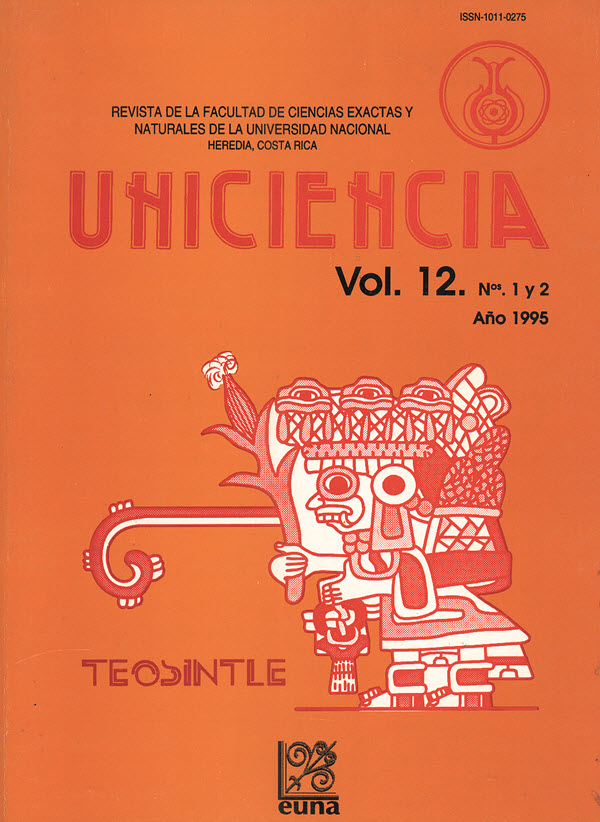Efecto de la práctica de la Dobla sobre el rendimiento del maíz en la región huetar atlántica de Costa Rica (ING)
Keywords:
práctica, rendimiento, maíz, regiónAbstract
A study was carried out in Huetar Atlantica region of Costa Rica, in order to measure the effect of different timing of the “dobla” in the maize final yield. The “dobla” is a cultural practice performed 40 days after silking and consists of bending down the stalk to put the cob upside down. The objective of this practice is to protect the grains from the heavy rainfall, winds and birds. The results reveal a negative effect over the dry weight of the kernel when the “dobla” is performed early after silking; however, it does not stop the kernel growth. On the other hand, it was observed that the “dobla” did not affect the kernel yield when the grains humidity was around 46%, that is reached, 30 days after silking. According to the results it is advisable that the peasant-farmers of the region perform the “dobla” 30 days after silking, instead of the usual 40 days, thus preventing damages caused by early birth attack and winds.
References
-
Downloads
Published
How to Cite
Issue
Section
License
Authors who publish with this journal agree to the following terms:
1. Authors guarantee the journal the right to be the first publication of the work as licensed under a Creative Commons Attribution License that allows others to share the work with an acknowledgment of the work's authorship and initial publication in this journal.
2. Authors can set separate additional agreements for non-exclusive distribution of the version of the work published in the journal (eg, place it in an institutional repository or publish it in a book), with an acknowledgment of its initial publication in this journal.
3. The authors have declared to hold all permissions to use the resources they provided in the paper (images, tables, among others) and assume full responsibility for damages to third parties.
4. The opinions expressed in the paper are the exclusive responsibility of the authors and do not necessarily represent the opinion of the editors or the Universidad Nacional.
Uniciencia Journal and all its productions are under Creative Commons Atribución-NoComercial-SinDerivadas 4.0 Unported.
There is neither fee for access nor Article Processing Charge (APC)





